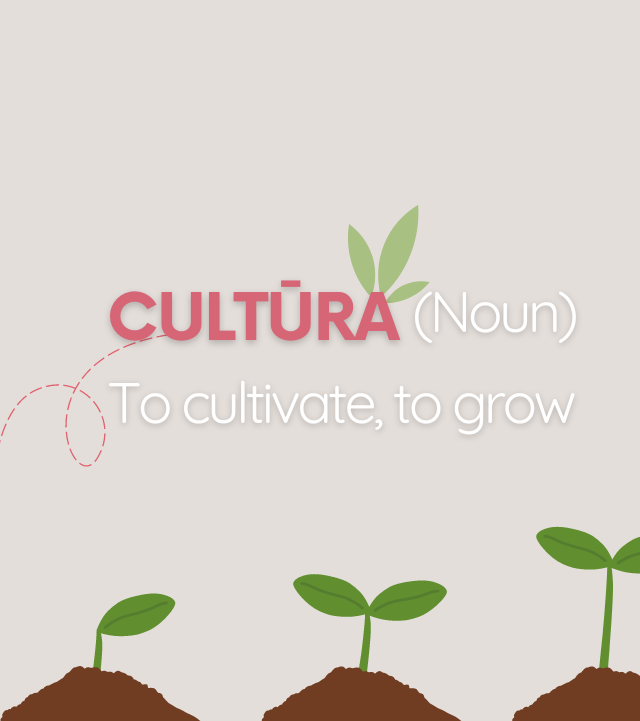07 Steps to Create a Culture of Kindness in the Workplace
Learn how to spread a culture of kindness, especially in workplaces.

Did you know that “cultura” in Latin means to grow or cultivate? This is where the word “culture” first appeared. According to Cambridge dictionary, Culture means the behaviors, attitudes, and other characteristics of a specific group of people within a society.
Culture in Business
For a business to succeed or fail, culture is crucial. An organization is stronger and more successful when employees feel valued and acknowledged for their contributions, have a sense of purpose, and are linked to one another.
The benefits of an engaging, kind, and positive workplace have a significant impact on workers’ productivity.
In a Major study, companies that had a good corporate culture, can increase revenue by x4. All aspects of organizational effectiveness—productivity, customer happiness, and employee retention—go up.
Let’s delve into the 7 steps to create a culture of kindness at work, according to the RAK Foundation:


01. Evaluate Your Values
What do you believe the employees have to say about the business, the group, and the workplace? Is it communicative, kind, fair, encouraging, adaptable, and supportive? This brings up the significance of setting up a company’s mission and values that are powerful and relevant. More importantly, make sure they are understood by others! Find methods to familiarize your employees with what your company stands for and how it is reflected in their work. Everyone can learn about your identity and principles from your mission and values. It serves as a benchmark for establishing expectations with your staff, clients, and contractors.
02. Reflect the Behavior You Want to See in Others
“Good morning” or “how are you?”. Saying something ordinary to others around us is one of the simplest things we can do, yet it has great power. When we put in our best effort, others tend to do the same.
Work with your team on setting shared objectives. It’s a good thing to share your goals with the rest of your team once established, but it’s better to actually include them in the goal setting process. This will make them more engaged.
Being grateful is a simple yet effective technique to create a culture of kindness in the workplace. Always find an occasion to say “thank you”. It’s important to take some time to consider the blessings, and reflect on the things for which you are grateful in your workplace.
Activity:
Use Confluence to initiate shared goal setting within your team. Create a dedicated space where team members can contribute to the goal-setting process. Solicit input, suggestions, and feedback directly on Confluence pages. This not only encourages participation but also makes the goal-setting process transparent and inclusive. Don’t forget to let a message of appreciation to someone who has made your work easier. It may be one sentence or one page. Express your sincerity and be specific on how that person has facilitated your work.
03. Make sure you have a space dedicated to open conversations
Encouraging communication in the office (or through virtual meetings) makes it easier to brainstorm and come up with fresh and creative concepts. Provide a mechanism that allows everyone in the team to express their thoughts and opinions in order to foster a secure and encouraging atmosphere.
Spend some time together, outside of work if possible, engaging in an activity unrelated to work. Make an effort to interact and get to know one another better on a personal level. This can strengthen ties and re-energize the group while fostering stronger relationships. A pleasant and secure work atmosphere is produced when members of your team are at ease with one another.
Activity:
Split up your team into groups of four to six members. Each group should receive a bag of M&Ms, with instructions to “take as many as you need.” Don’t tell them anything else. If they asked about more details, simply repeat the instructions.
After each person has received a few M&Ms, instruct them to go around the circle and share with the other participants one special quality about themselves for each M&M they have taken.
04. Celebrate What You Fear The Most
Give room to errors, or even better, celebrate them! What if, despite the fact that things didn’t turn out the way we had planned, we gave our staff members recognition for taking a risk, expressing an idea, trying something new, or stepping outside of their comfort zone? Wouldn’t that make them take responsibility for their mistakes, and try to do better next time?
Discuss what they learnt from it, what good came from it, and chances to do better the next time, rather than criticizing someone for making a mistake.
Action:
If you have trouble with being organized, try telling yourself, “I’m working on my organization skills”. Or if you believe that you’re not creative enough, then tell yourself, “I have ideas and skills that are specific to me.” Start reminding yourself and other people that there’s always space for improvement and growth!
05. Draw Your Redlines
Give yourself and the group some time to define your team limits. This is one of the most crucial, yet difficult, abilities. It requires being assertive while keeping both your own and the group’s needs in mind. Together, the team determines the collective limits. Tasks are assigned, needs are developed, and priorities are established. Maintaining red lines both within and between teams fosters interaction skills and a decrease in conflict.
Show sympathy. Nothing compares to compassion in leadership.
It is a worldwide language that all people can understand. Make it a practice to always ask one simple question to everyone you interact with: “How can I make today better for this person?”
06. Positive Vibes
Foster collaboration and positive communication within your team, and embrace the difference.
New ideas, new perspectives! Difference is important in any team environment to boost productivity.
People often think that if there’s a task, they must do it themselves, but that is not necessarily helpful! Effective leaders understand that building interdependence and fostering an atmosphere that is conducive to fruitful collaboration are essential to building a strong team.
Activity:
Use Trello’s visual boards to showcase the team’s commitment to continuous improvement. Each team member can have a list with tasks related to personal development or embracing challenges.
07. It’s Time to Party!
A celebration doesn’t always mean partying. There are times when honoring someone’s concept or idea can have equal impact. It’s important that people hear compliments from both their supervisor and their coworkers. But a party will always be welcome!
You can celebrate every day, but imagine doing something as a team on Random Acts of Kindness Week. Wouldn’t it be the best way to spread kindness and create a culture of kindness at work?


